Make of this what you will.
One of my earliest memories is standing in a garden, looking up at towering pine trees and shouting “Hello Robert!” The adults around me shouted it too and eventually a voice from the very tops of those trees shouted “Hello Robert!” back at us. I was thrilled.
Funnily enough I don’t remember ever seeing Robert the macaw, I just remember his voice, but he was very real and was later banished to a zoo after an incident with some upholstery.
Later, in my parents’ garden, I decided that I had a parrot and his name was Pamorama (after the hard-hitting investigative documentary series, because I liked the theme tune). My mother says I used to walk around with one shoulder hunched up because he was sitting on it. Pamorama and I built a nest in the hedge. Being in Somerset this hedge grew on an ancient bank of thick stones and slates mortared with moss, primroses and ferns; there was an easy bit to climb, just where a tangle of ivy and elder leaned outwards, with a few more sticks woven in it was just strong enough to bear our combined weight. Pamorama and I could spend happy hours in the nest watching our neighbour Mr Quick talking to his hens.
I think this was the beginning of my being happiest when in close contact with plants. I still know that garden by heart. I remember the smell of the elder, and of the box hedge (good place to find racing snails), the man-eating nettles around the compost heap, the orange montbretia clump where the cat liked to curl up, the pink and white phlox (their scent takes me straight back there), the fruit cage, roses, sweet williams and apple trees.
After Pamorama flew away I had a Wendy house with two rectangular flowerbeds outside. We sowed candytuft and love-in-the-mist, night-scented stock and cornflowers. Fat green grass encroached year after year until those beds were just grassy hollows.
My mother’s chickens didn’t mind me playing in their run, especially when I helped them to dig for worms. One indian game hen deigned to perch on my arm like a fierce black parrot. Her party trick was to keep her head in one place while I waved her about, but she wasn’t keen when I hobbled like I had a wooden leg, and she refused to learn to say “Pieces of eight”.
I went for a snoop around the village recently. The house has changed enormously but just down the road there’s still a little tin chapel down a grassy lane next to long-departed Mr Quick’s cottage. The wire fence beside the chapel is still broken in exactly the same place so that you can climb through to the fields and the stream where I used to fish for caddis fly larvae and sticklebacks.
My mother now lives in the next village but we still go for walks along the same ancient cobbled tracks deep in red sandstone, their banks and hedges forming tunnels of fern dotted with wood sorrel, primroses and pennywort. Five-bar gates offer views across upholstered patchwork fields dotted with pink sheep. Soil derived from red sandstone has a distinctive smell when wet (which it nearly always is in Somerset), a smell which makes me feel at home, but it doesn’t half stain things.
I went to a tiny school one mile away run by a slightly eccentric couple. Mrs W was frightening but made us LEARN things. Mr W was kind, artistic and fascinated by natural history. Our classroom was cluttered with tadpoles, duckweed, caterpillars,stick insects, skulls, an elephant’s tooth. He took us for long walks and showed us such marvels as the potter wasp making its perfect pot on a blade of grass. The pupils helped to clean out and refill the concrete swimming pool every summer and yet the water we bobbed about in was green, and enlivened by whirligig beetles and great diving beetles. The doctor next door called it pee soup.
At that school we had a cat, three dogs, a duck, a goat, some guinea fowl and a huge colony of guinea pigs. But no parrot. Being guinea pig monitor was best, you could spend playtime building mazes for them. Much of the food at this school came from the garden, a fact for which we failed to be grateful, but we did learn that pungent parsley and bitter, sloppy marrow wouldn’t kill us if we ate it. We slipped gristle to the dogs. No clean plate, no playtime.
My favourite time was late in the summer term, when we would be allowed through from the concrete yard, source of magnificent knee scabs, to the garden to play circle games like In and Out the Dusty Bluebells, or The Farmer Wants a Wife. Here we were usually barefoot, such a delicious feeling until you stepped on a thistle. Our end of term productions (Mrs W’s plays what I wrote) were always in the garden unless it poured. I enjoyed playing the cook in Alice in Wonderland (MORE PEPPER!) and making the parents laugh, but one clue to why I am a gardener and not an actress is that I can still remember the exact layout of that garden, including all the lumps, bumps and banks in the lawn, and the vivid blue houndstongue which grew by the fence where we changed our costumes.
When I was a bit older I would spend as much free time as possible at the local riding school, getting extra rides in return for cleaning tack and mucking out. They had a green parrot whose cage was often left by the front door, so that he could yell “Trrrot on!” at the passing strings of ponies. We learned to memorise the texture of every track – on walks I still often think as we step onto some nice, firm, upwardly-sloping turf, “This would be a good place for a canter”.
Once I had been plonked onto the conveyor belt of mainstream education my outdoor activities dwindled to weekends and holidays, much of that time taken up by exam revision in the sun on the barn steps while swallows shot in and out over my head. Gradually my green companions shrank to a Tradescantia on the desk of my sixth form study or a twee (but prize-winning, I’ll have you know) poem about daisies being murdered by a lawnmower. I wasn’t to have a garden of my own for years, and it was even longer before I became a professional gardener.
But I always had a parrot on my shoulder.

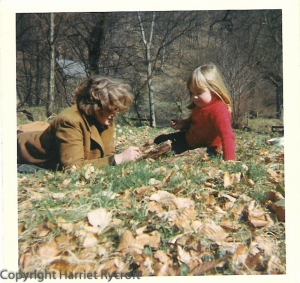
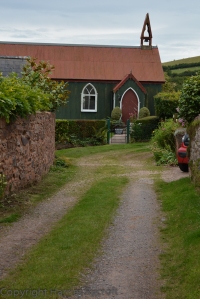
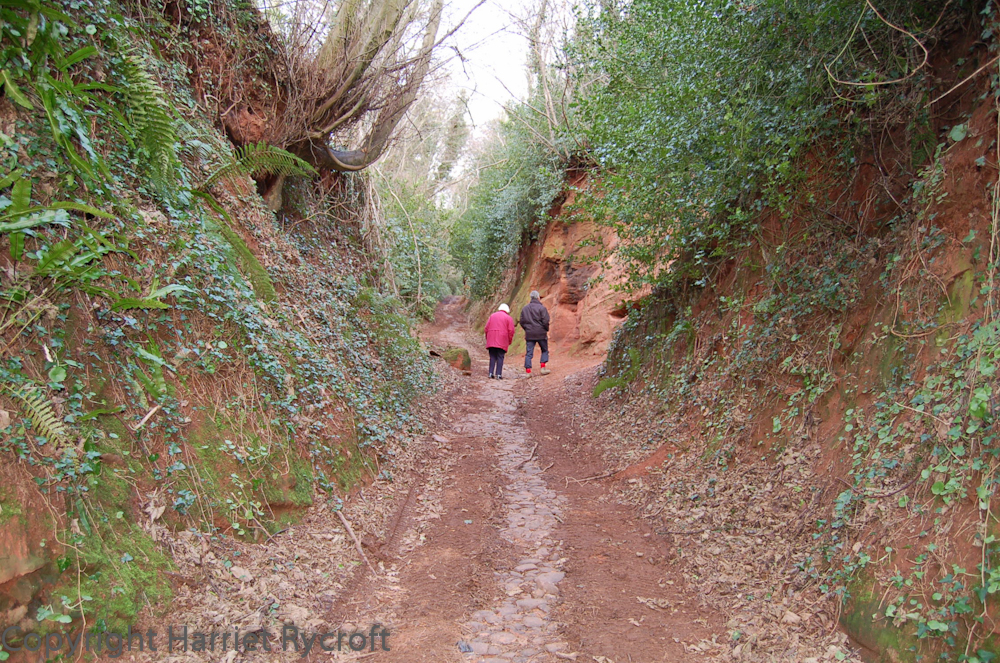



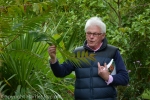
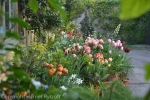
More please! I love the ‘BLOGROLL’. X
LikeLike
Thanks, Toria, fraid the Blogroll isn’t my invention – wish I could take the credit for it. Lots of nice gardeny blogs to visit there though.
LikeLike
What a lovely post and it sounds a wonderful childhood. I got to spend quite a bit of imaginery time in the garden as a child too.
Looking forward to reading more posts here
LikeLike
Thank you Helen, I’m pleased people have enjoyed it, I did worry that it might seem self indulgent but it is MY blog! Nice to have a blog of my own at last.
LikeLike
Absolutely it’s your blog and you write about what you want, don’t worry about what readers might or might not think as it will cramp your style and show.
LikeLike
A wonderful evocative blog bringing memories of childhood at its best.
LikeLike
Thank you, Carolyn, I’m glad you enjoyed it!
LikeLike
Lovely post. Am suspicious of Pamorama ‘just flying away’ though. Am sure he must have ended up in a stew of some sort at xmas. That could by the way be the next ad for Specsavers – missed the chicken….
LikeLike
Thanks Petra. No parrots were harmed in the making of this blog.
LikeLike
A lovely read Harriet, you’ve got good strong roots : )
LikeLike
Thanks Jill, I think many of us are strongly connected to the landscape we grew up in.
LikeLike
Horrah! So pleased you are back in blogland, lovely post, it warmed my cockles on this chilly day x
LikeLike
Thanks Gill, I’m always up for a bit of cockle-warming!
LikeLiked by 1 person
Thank you, Harriet for a delightful blog. Kathri Lewis
LikeLike
Thanks Kathri, glad you like it!
LikeLike
Very good Harriet brings back memories of English countryside quite different to New Zealand
LikeLike
Thanks David. Yes I think in England we’re lucky to have so many cross-country footpaths and tracks to explore.
LikeLike
I have just found your blog via Twitter. I think most gardeners have found memories of a childhood garden, mine was our grandparents,we lived next door. I enjoyed reading about yours.
LikeLike
Yes Brian, I think those early experiences are vital. I’m still waiting to see the result of being able to play in mud and generally mess about in the garden in my two boys though (now in their twenties). I’m so glad you enjoyed reading this.
LikeLike
Glad to have found your blog. Just sorry that I will not get to meet you when you come to Bradfield Garden Club on 11th July as I am giving a talk to another group that night!
LikeLike
That’s a shame! What are you going to be talking about?
LikeLike